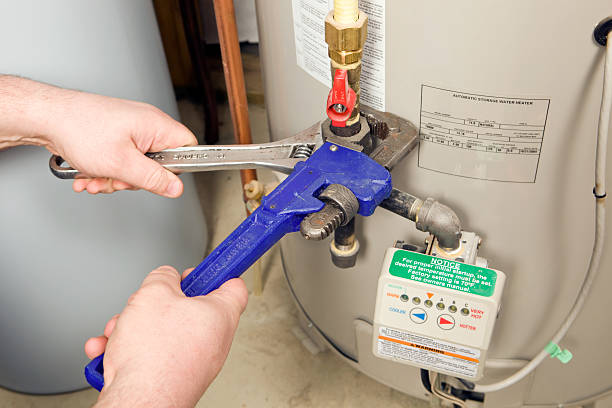Tankless water heaters have become increasingly popular for their energy efficiency and on-demand hot water supply. However, like any appliance, they are not immune to issues that may arise over time. If you find yourself in a situation where your tankless water heater is not functioning optimally, this guide provides authoritative tips for efficient troubleshooting and fixes.
I. Understanding How Tankless Water Heaters Work
Before delving into troubleshooting, it’s essential to have a basic understanding of how tankless water heaters operate. Unlike traditional water heaters with storage tanks, tankless models heat water on demand as it flows through the unit. When a hot water tap is turned on, cold water travels through a heat exchanger, where it is rapidly heated by either a gas burner or electric elements.
II. Common Tankless Water Heater Issues
No hot water:
One of the most common issues is a lack of hot water. This could be due to problems with the heating elements, a malfunctioning thermostat, or issues with the gas supply (for gas-powered units).
Fluctuating water temperature:
If you experience inconsistent water temperatures, it may indicate scale buildup in the heat exchanger or issues with the flow sensor.
Ignition Failure (Gas Models):
Gas tankless water heaters rely on ignition to start the heating process. Ignition failure may be caused by a faulty igniter, gas valve, or insufficient gas supply.
Error Codes:
Many tankless water heaters are equipped with diagnostic features that display error codes. These codes can help pinpoint specific issues, such as overheating, sensor problems, or combustion issues.
III. Troubleshooting Tips for Tankless Water Heater Repair
Check for Power Supply Issues:
Ensure that the unit is receiving power. Check the circuit breaker and reset any tripped breakers.
For gas units, confirm that the pilot light is lit and that there are no issues with the gas supply.
Inspect the Water Supply:
Check for any blockages or restrictions in the water supply line.
Verify that the water-inlet filter is clean. Periodically cleaning or replacing this filter is crucial for proper operation.
Flush the system:
Sediment and scale buildup can impede the heat exchanger’s efficiency. Follow the manufacturer’s instructions to flush the system and remove any accumulated debris.
Check for Leaks:
Inspect the unit and connections for any water or gas leaks. Addressing leaks promptly is essential for safety and proper functioning.
Review Error Codes:
If your tankless water heater displays error codes, refer to the manufacturer’s manual to interpret them. Error codes provide valuable information for diagnosing specific issues.
Inspect Venting (Gas Models):
Ensure that the venting system is clear of obstructions and functioning correctly. Improper venting can lead to combustion issues and ignition failure.
Adjust Temperature Settings:
Check the temperature settings on the unit. Incorrect settings could result in water that is too hot or not hot enough.
Inspect the gas burner or heating elements.
For gas models, inspect the burner assembly for signs of dirt or corrosion. Clean or replace components as needed.
For electric models, check the heating elements for scale buildup. Descaling may be necessary to maintain efficiency.
IV. When to Seek Professional Assistance
While some troubleshooting and repairs can be performed by homeowners, certain issues may require the expertise of a professional. Consider seeking professional assistance in the following scenarios:
Persistent error codes that are not resolved through troubleshooting.
Gas-related issues, such as problems with the gas valve, pilot light, or ignition system.
Internal components that require specialized tools or knowledge to repair or replace.
Warranty considerations: attempting certain repairs independently may void the manufacturer’s warranty.
V. Maintenance Practices for Long-Term Performance
To prevent future issues and ensure the longevity of your tankless water heater, incorporate the following maintenance practices:
Regular Flushing:
Schedule periodic flushes of the system to remove sediment and scale buildup.
Check and Clean Filters:
Clean or replace filters as recommended by the manufacturer.
Professional Inspection:
Consider scheduling annual professional inspections to identify and address potential issues before they escalate.
Monitor for leaks:
Regularly check for any signs of water or gas leaks around the unit.
Follow manufacturer guidelines:
Adhere to the manufacturer’s guidelines for maintenance, including descaling procedures and recommended service intervals.
VI. Conclusion
Efficient troubleshooting and timely repairs are key to maintaining the optimal performance of tankless water heaters. By understanding the common issues, conducting regular maintenance, and following the manufacturer’s guidelines, homeowners can address minor problems and potentially avoid more significant issues down the line. While some repairs can be handled independently, it’s crucial to recognize when professional assistance is necessary to ensure the safety and functionality of your tankless water heater. Remember, a well-maintained unit not only provides reliable hot water but also contributes to long-term energy efficiency and cost savings.


